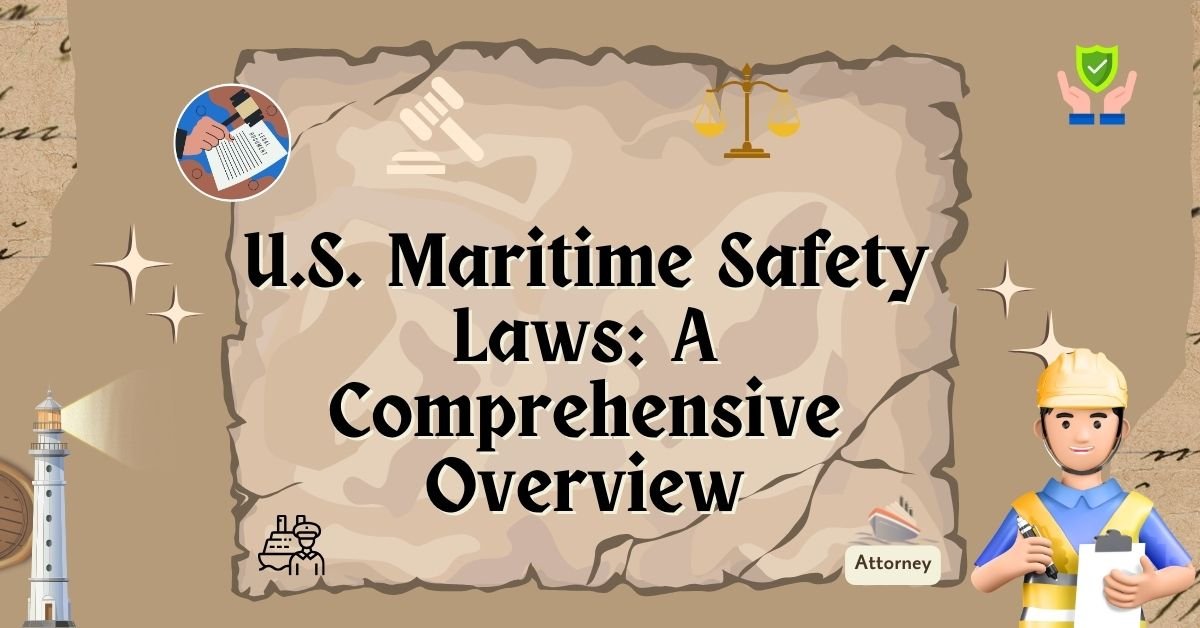Introduction
U.S. Maritime Safety Laws are pivotal in ensuring the safe and efficient operation of maritime activities.
This comprehensive guide will explore the key aspects of these laws that govern America’s waters.
Historical Evolution of U.S. Maritime Safety Laws
The U.S. has a rich history of evolving maritime safety laws, adapting to technological advancements and changing maritime environments.
The Jones Act and Its Implications
A cornerstone of U.S. maritime law, the Jones Act regulates maritime commerce in U.S. waters and between U.S. ports.
Safety Regulations for Vessel Construction
These laws set standards for vessel construction, ensuring that ships are built to withstand the rigors of maritime operation.
Crew Training and Certification
Crew members must meet specific training and certification requirements, which are crucial for maintaining safety at sea.
Navigation and Communication Rules
Navigation and communication regulations are key to preventing collisions and ensuring smooth maritime traffic.
Pollution Prevention Laws
These laws focus on minimizing the maritime industry’s environmental impact, particularly regarding pollution prevention.
Cargo Handling and Stowage Regulations
Regulations on cargo handling and stowage are essential for ensuring the safety of both cargo and vessel during transit.
Emergency Procedures and Equipment
Emergency protocols and equipment regulations are crucial for handling maritime emergencies effectively.
Inspections and Compliance
Regular inspections ensure compliance with maritime safety laws, maintaining the integrity of maritime operations.
Maritime Security Measures
Security laws are vital for protecting maritime assets and personnel from various security threats.
Reporting Accidents and Incidents
Clear procedures for reporting maritime accidents and incidents help in quick response and future prevention strategies.
Liability and Insurance Requirements
Understanding liability and insurance is essential for maritime operators to manage potential risks effectively.
Role of the U.S. Coast Guard
The U.S. Coast Guard plays a critical role in enforcing maritime safety laws, ensuring compliance and safety in U.S. waters.
Future of U.S. Maritime Safety Laws
Looking ahead, maritime safety laws are likely to evolve with technological advancements and changing global maritime dynamics.
Conclusion
Adhering to U.S. Maritime Safety Laws is not just a legal obligation but a commitment to safety, security, and environmental responsibility in maritime operations. Play sprunki phase 28 Anytime, Anywhere!
FAQs
- What is the primary objective of the Jones Act?
- How often are maritime vessels inspected for safety compliance?
- What are the key requirements for maritime crew certification?
- How do U.S. Maritime Safety Laws address environmental protection?
- What are the potential future changes in U.S. Maritime Safety Laws?

Good day! I know this is kind of off topic but I was wondering which blog platform are you using for this website?
I’m getting fed up of WordPress because I’ve had problems with hackers and I’m looking at alternatives for another
platform. I would be great if you could point me in the direction of a
good platform.!